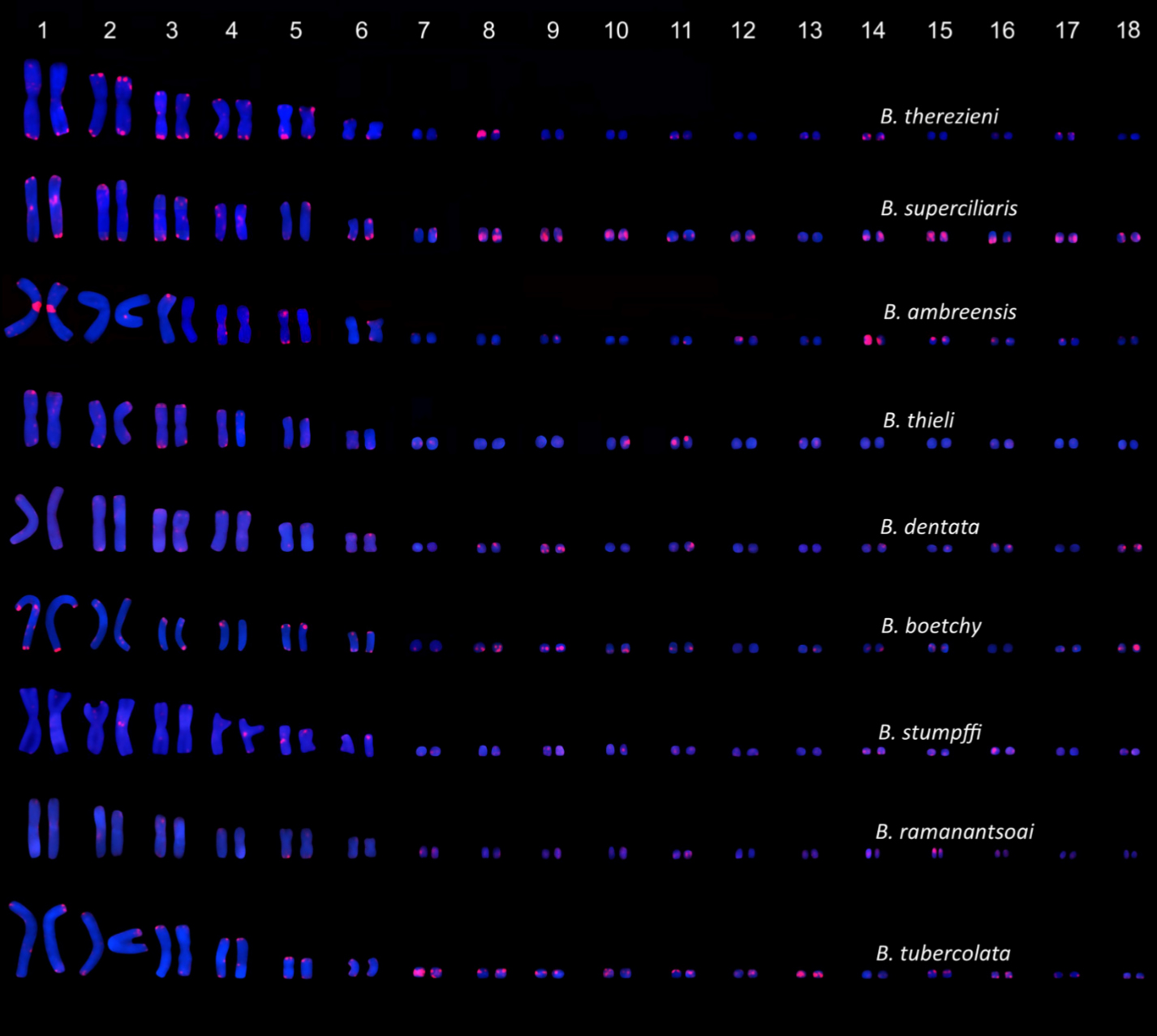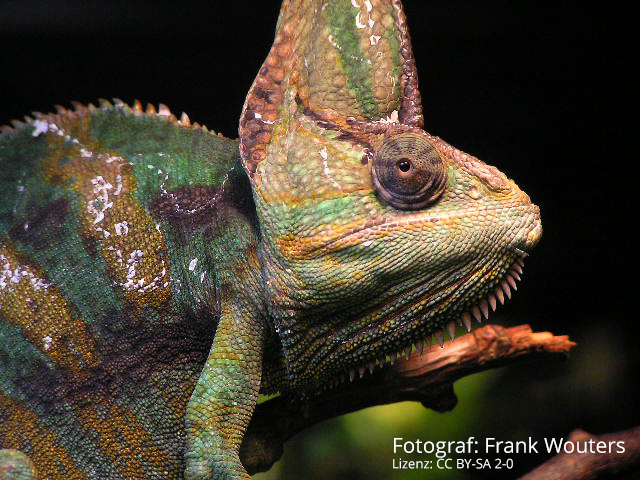It has been known for some time that the sex of the Veiled chameleon (Chamaeleo calyptratus) is genetically determined. The species has an XX/XY system. Scientists from Russia, Great Britain, Italy, and Thailand have now studied the karyotype of the species, i.e. the characteristics of the chromosomes.
The probably most original karyotype of all chameleons is 2n= 36. This “primal chameleon” had six pairs of metacentric macrochromosomes and twelve pairs of microchromosomes, particularly small chromosomes. The Veiled chameleon, on the other hand, has a smaller number of chromosomes, namely only 2n=24. Using various genetic investigation methods, the researchers in the present study found that this karyotype probably arose through fusions. Microchromosomes apparently fused with each other twice, and micro- and macrochromosomes fused no less than four times. The latter, the so-called heterogeneous fusion between chromosomes of different sizes, is unusual for vertebrates. Normally, macro- and microchromosomes are located at different locations in the cell nucleus and are transcribed and replicated at different rates. However, this phenomenon is already known from alligators and turtles – for chameleons it is new.
Until now, it was also unclear which pair of chromosomes in the Veiled chameleon is actually responsible for the sex. In Chamaeleo chamaeleon, the second largest chromosome pair codes for sex. However, initial speculation suggests that in the Veiled chameleon the fifth chromosome pair (CCA5) may instead be the sex chromosome pair. The conjecture still needs to be validated by further research. It is also still up for discussion which gene is actually predominantly responsible for the development of the sex organs in the embryo – the researchers identified at least three possible genes on CCA5.
Identification of Iguania ancestral syntenic blocks and putative sex chromosomes in the Veiled Chameleon (Chamaeleo calyptratus, Chamaeleonidae, Iguania)
Katerina V. Tishakova, Dmitry Yu. Prokopov, Guzel I. Davletshina, Alexander V. Rumyantsev, Patricia C. M. O’Brien, Malcolm A. Ferguson-Smith, Massimo Giovannotti, Artem P. Lisachov, Vladimir A. Trifonov
International Journal of Molecular Sciences 23, December 2022
DOI: 10.3390/ijms232415838



